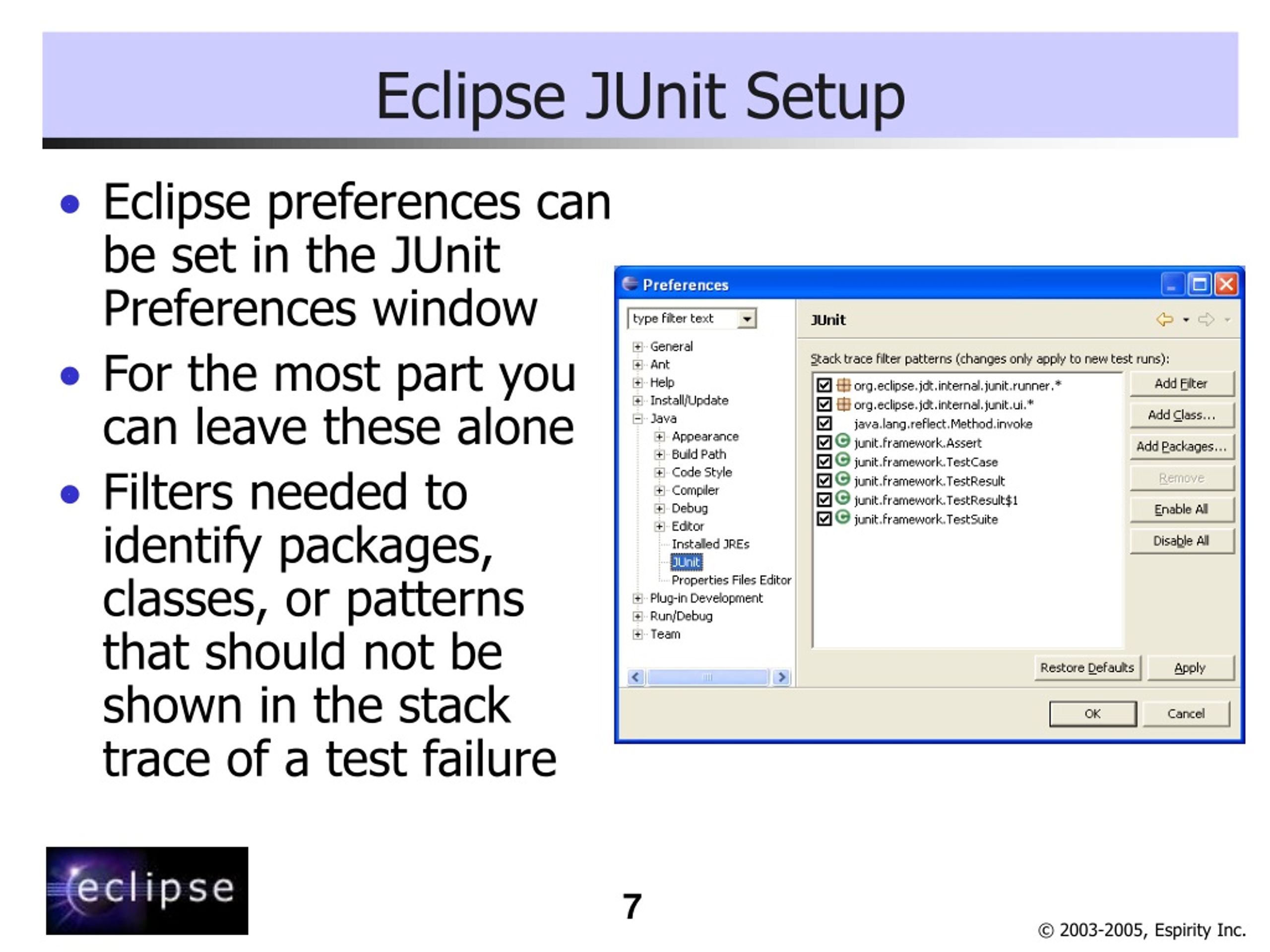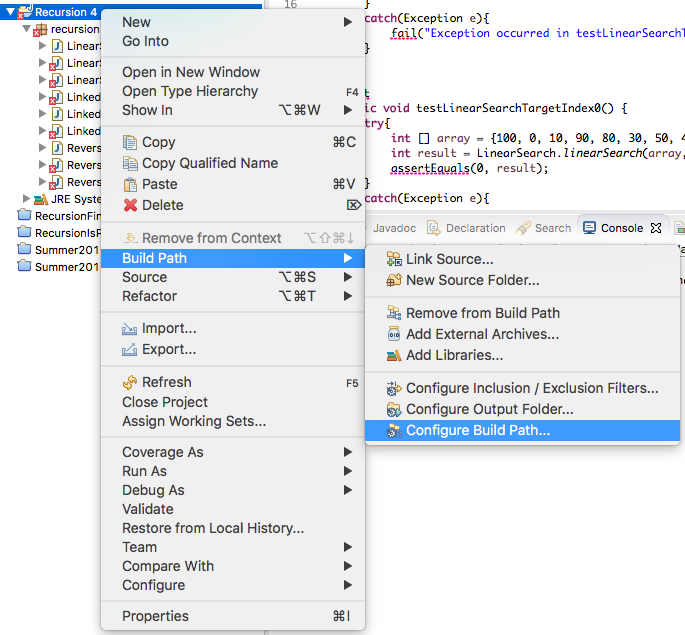

The box " Create tasks for generated test methods", if checked, is useful if you are keeping track of tasks you are planning to do on your code. The box " Create final method stubs", if checked, declares the stubs final. Pressing Next leads to another view of a check-box list in which you can choose methods for which method stubs will be generated. In the pop up you can choose the JUnit version (4 is the one we use) and the package and class name of your test case.įurthermore, you can tell Eclipse to write method stubs for setting up and tearing down the state in which you want the tests to execute, and specify which class to create the test case for. Once you clicked on the item, a big dialog should pop out. In Eclipse, you create a JUnit test case by selecting in the main window menubar File -> New -> JUnit Test Case. So tests have to be mantainable entities in your project.Ī test case can then be created. You will probably leave that parts of your code rotting.Īltough - as you probably saw during the lessons - testing cannot prove the correctness of your methods, you will have to write down some tests to see if everything is working fine. It is not economical in the long run: it bloats your code and soon you will not even remember what the tests were about as your work evolves. This approach can be good if you are writing a one-class work for school, but it is a definitely deleterious approach if you are either building a complex program with big and many classes or if you are working together with other people.

A very tempting way to do it is either to write a main method in the same class and trying to write some tests to exercise it. In both cases the a is not modified.Īt this point, you would like to write some tests for your class. Post: If the element b is in array a, then the method returns true.Informally, the specification of such method should be something like It has a method search that takes an array and an integer. Suppose you developed a class called M圜lass. If you have installed Eclipse for Java Developers (or Java EE) the JUnit The seamless integration of tools makes a user more keen to adopt them in his or her development work. This tutorial is intended to give an hint about how to

How to use JUnit in Eclipse How to use JUnit in Eclipse


 0 kommentar(er)
0 kommentar(er)
